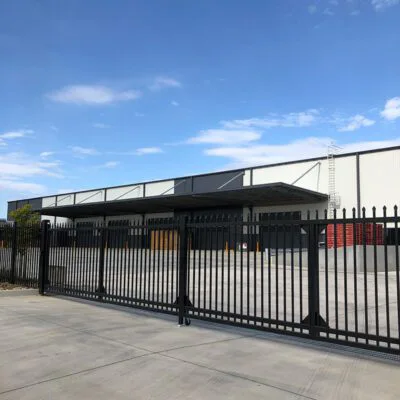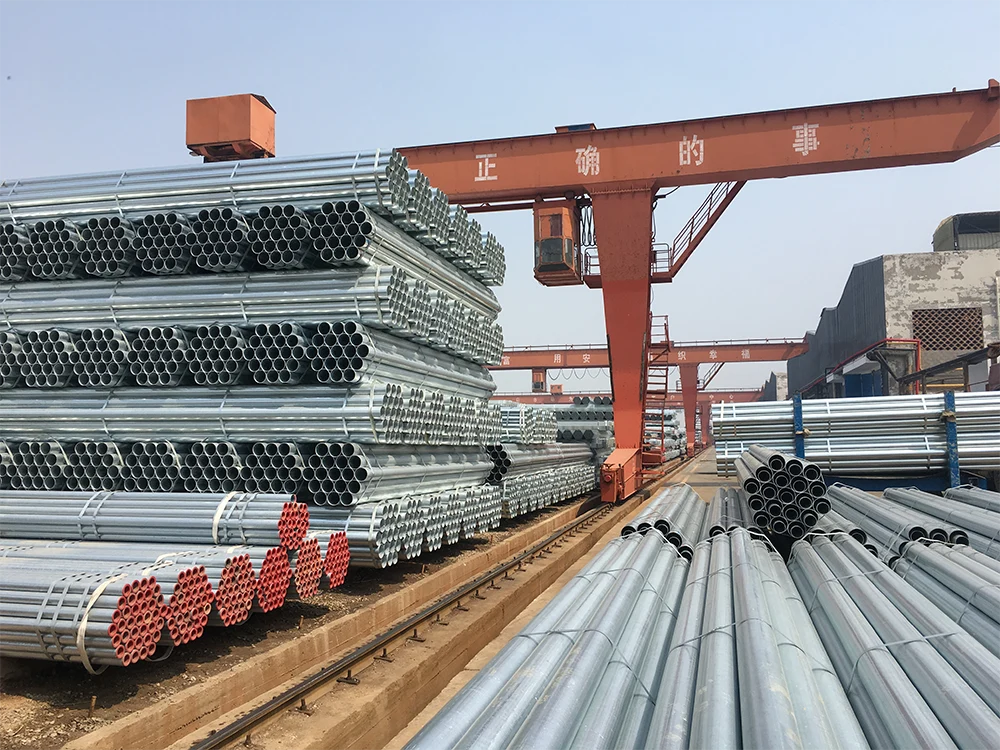
In the competitive world of fence manufacturing, staying ahead requires not only adherence to quality temporary welded mesh fence production processes but also a commitment to continuous improvement and environmental responsibility. As a professional fence manufacturer specializing in temporary welded mesh fences, we pride ourselves on our comprehensive approach that encompasses every aspect of production and beyond. This blog post aims to provide an in-depth look at our production process, highlight our technological advancements, and discuss our efforts in sustainability and customer service.
We use premium galvanized steel pipes with thicknesses of 1.0mm, 1.4mm, and 2.0mm. They undergo 100% tensile testing to ensure their tensile strength meets industry standards. They undergo 24-hour salt spray corrosion testing to verify their superior rust resistance, ensuring a service life of at least 15-20 years. The galvanized steel wire used for welding comes in diameters of 2.5mm, 3mm, and 4mm. Ten percent of each batch of wire undergoes bend and torsion testing to verify its ductility and toughness. Furthermore, the zinc coating, typically exceeding 50 microns in thickness, undergoes rigorous testing to provide reliable corrosion protection for over 20 years. Raw materials are meticulously inspected for strength, durability, and corrosion resistance to ensure only the highest quality materials enter the production line, laying a solid foundation for the superior performance of the final product.

We utilize laser or CNC cutting technology to ensure pipe cut lengths within an error of ±0.5mm, ensuring consistent dimensions of the fencing components. For steel pipes that require flattening, the flattened cross-sectional width is typically required to be 80-90% of the original diameter, with less than 5% strength loss after flattening, providing a smooth and stable contact surface for subsequent welding. Precise cutting and uniform flattening are critical to ensuring the overall structural stability of the fencing frame and weld quality.
Our factory utilizes advanced, fully automatic mesh welding machines capable of producing 20-30 welds per minute, far exceeding manual efficiency. The shear strength of mesh welds produced by automated welding typically exceeds 70% of the tensile strength of the steel wire used. Automated production ensures a highly consistent size, shape, and strength of each weld point, resulting in a uniformity error of less than 2% for the finished mesh. This not only improves production efficiency but also ensures mesh uniformity and structural strength, which are the core of a durable fence.
Frame welding is performed using either automated equipment or manual welding to ensure full welds, free of pores and cracks. Weld length and depth are strictly adhered to design specifications to ensure the load-bearing capacity of each joint. After welding, the frame undergoes horizontal and vertical testing to ensure overall stability and verticality after installation, typically with a tolerance of no more than 3°. Precise frame welding is the cornerstone of the entire fence structure and directly impacts its overall safety.
Spot welding or continuous welding is performed using a combination of robotic welding or experienced technicians.
The number and distribution of weld points between the grid and frame are optimized to ensure a minimum of 150 weld points per square meter of fence, with an average shear resistance of greater than 300N per weld point. The fully welded fence panels deform less than 10mm when subjected to a 200kg lateral impact. The mesh and frame are firmly integrated into a single unit, significantly enhancing the fence’s impact resistance and overall stability, making it effectively resistant to external forces.
After welding, we thoroughly remove residual scale and slag from the welds using mechanical or chemical methods. This step not only improves the fence’s aesthetics but, more importantly, eliminates potential corrosion sites, laying the foundation for subsequent anti-corrosion treatment.
The touch-up paint is applied using a zinc-rich anti-rust primer with a zinc content of over 80%, providing excellent electrochemical protection. The surface is then sprayed with an outdoor-grade polyester or epoxy topcoat, providing UV protection and additional weather resistance. The film thickness is typically 50-70 microns, providing 5-10 years of color stability and corrosion protection. Minor scratches or exposed metal areas that may have occurred during welding are professionally repainted, enhancing rust resistance and the overall appearance of the fence.
We thoroughly inspect product quality, including weld strength, paint film thickness, dimensional accuracy, overall flatness, and appearance defects. Every fence piece must pass rigorous quality inspection to ensure it meets our high standards and is guaranteed to satisfy our customers.
The final step in the temporary welded mesh fence production process is packaging, which is designed to protect the product during transportation. We use strapping bands, steel frames, and pallets to ensure the fences arrive at their destination in perfect condition. Of course, as a professional manufacturer, we can provide special packaging for our products according to customer needs.
Temporary Welded Mesh Fence Production Process Video
In addition to our rigorous production process, we also prioritize environmental sustainability. Our manufacturing practices are designed to minimize waste and reduce our carbon footprint. We recycle materials wherever possible and use environmentally friendly technologies and processes. This commitment not only ensures the sustainability of our operations but also appeals to environmentally conscious customers.
We continuously invest in the latest technology to enhance our production efficiency and product quality. Our state-of-the-art welding equipment and automated cutting machines ensure precision and speed, reducing production time while maintaining high standards. These technological advancements allow us to meet large orders swiftly and maintain consistency across all products.
Our temporary welded mesh fencing production process adheres to national and international safety and quality standards, such as the Australian AS 4687-2007 standard. We are compliant with ISO certifications, which underscores our commitment to maintaining global standards in our manufacturing processes. This compliance reassures our clients that our products are not only of high quality but also align with safety regulations, making them suitable for a wide range of applications.
Our relationship with clients does not end at the sale. We offer robust customer support to assist with any questions or issues that may arise during the installation or use of our fences. Our team is ready to provide guidance on best practices for installation and maintenance, thus ensuring that our clients get the most out of our products.
The Fence Base serves as the foundational support for temporary welded mesh panels. It is crucial for maintaining the upright position of the fence, especially in areas without the possibility of digging or where portability is necessary. Typically made from robust materials like concrete or heavy-duty plastic, these bases ensure that the panels remain stable and secure against wind and incidental contact.
The Fence Panel Stay is essential for reinforcing the temporary fence setup, particularly in long stretches or in conditions prone to high winds. These stays connect to the main fence panels, thus providing additional lateral support. By distributing stress and adding rigidity, the stays prevent the fence from toppling or bending, thereby enhancing the overall structural integrity of the fencing system.
Temporary fence clamps are a key component for securely connecting individual panels of a fence. These clips fit snugly around the frames of adjacent panels, locking them in place. Made from durable materials such as galvanized steel, these clamps ensure a firm and stable connection, crucial for maintaining the continuity and strength of the fence barrier.
Integrating these components into a cohesive temporary fencing system involves a straightforward yet precise process. Initially, the Fence Base is positioned at regular intervals along the desired perimeter. Each panel of the temporary welded mesh fence is then inserted into these bases, ensuring that the base supports the panel securely.
Following the placement of the panels, the Temporary Fence Clamps come into play. These are attached at the top and bottom of the junction where two panels meet, securing them tightly together. This connection is vital for preventing gaps and ensuring that the fence acts as a continuous barrier.
For added stability, especially in challenging environments, the Fence Panel Stays are then connected to the panels. Positioned at strategic points along the fence line, these stays are anchored to the ground and attached to the panels, usually midway up the fence. This setup provides additional support against lateral forces such as wind.
Durability:
Our temporary welded mesh fences are designed to last. We use high-quality galvanized materials that are resistant to rust and corrosion, thus making our fences suitable for long-term outdoor use.
Customization:
We offer customized solutions to meet the specific needs of our clients. Whether it’s size, shape, or color, we can tailor our products to fit any requirement.
Ease of Installation:
Our fences are designed for quick and easy installation, making them ideal for temporary setups at construction sites, events, and other applications.
Security:
With robust construction and reliable materials, our temporary welded mesh fences provide excellent security, keeping areas safe from unauthorized access.
Our approach to manufacturing temporary welded mesh fences is holistic. Integrating advanced production techniques with a strong emphasis on sustainability, innovation, and customer service. By maintaining rigorous standards and continuously seeking improvements, we not only meet but exceed customer expectations, ensuring our position as a leader in the fencing industry. Our commitment to quality, combined with our dedication to environmental stewardship and technological advancement, sets us apart and defines our brand as a trusted name in fence manufacturing.